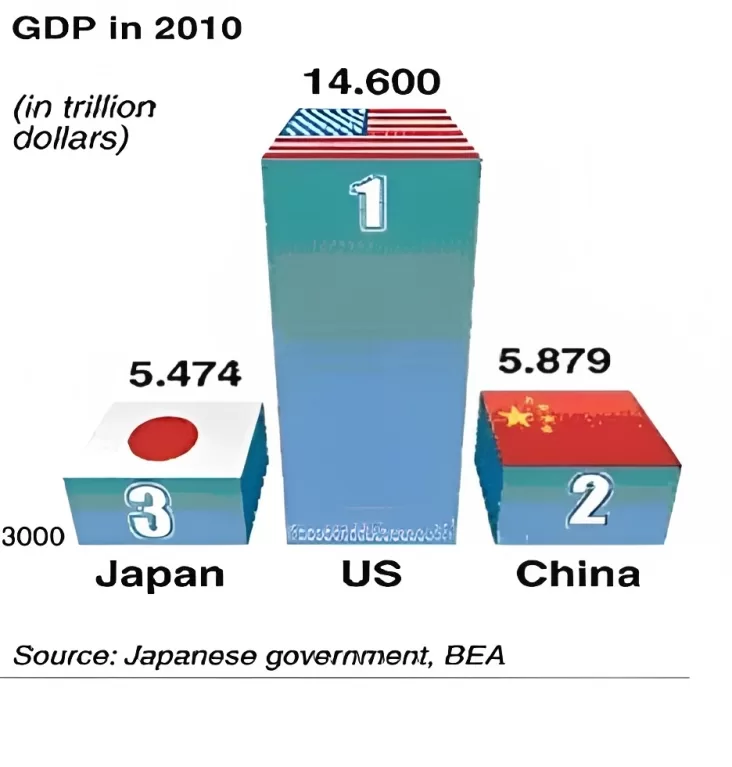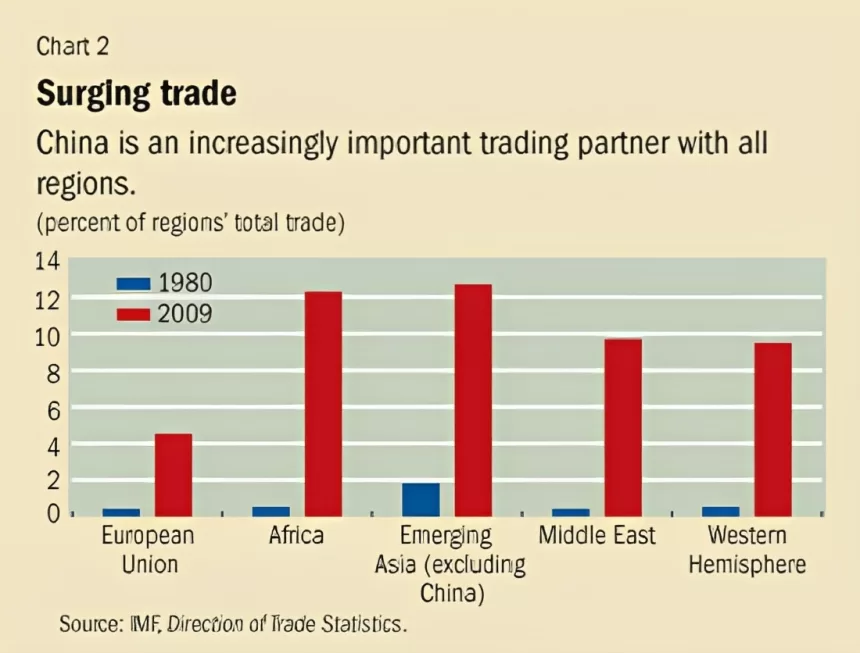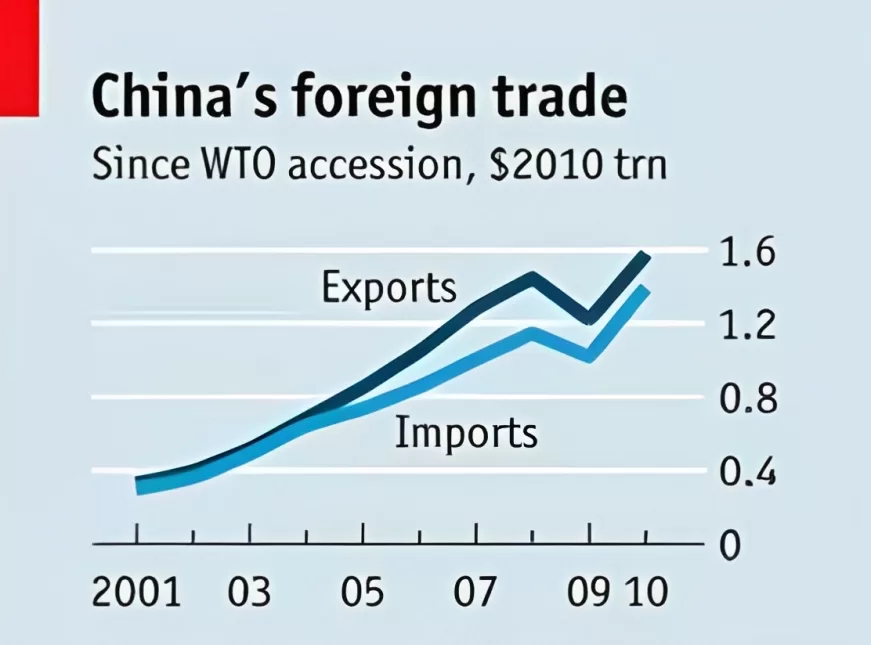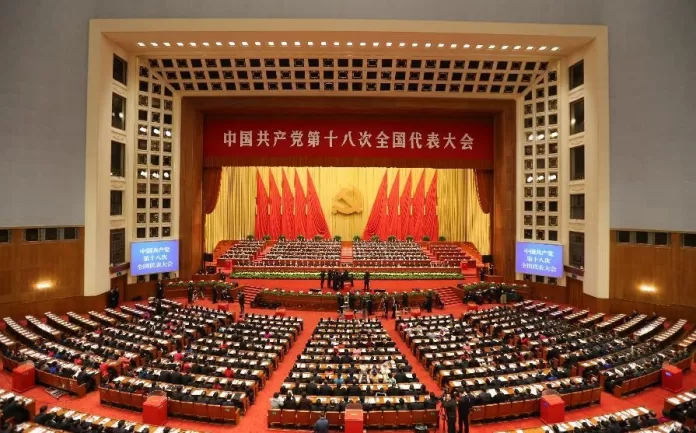Most recently, the People’s Republic of China during Communist Party Central Committee (CPC) 18th meeting changed its top leadership and the reins of governance and decision making power has been handed over to Xi Jinping, the new president of China. It fully reflected the will of the Party, which is thriving and full of vitality, and the wishes of the people across the nation. It was indeed biggest shake-up of the party’s leadership in a decade. Xi Jinping is now CPC (of the 82 million-member) general secretary, but also head of China’s army. Hopefully, the giant change will further enhance its awareness of crises, innovation, objectives, and missions on the new journey. The seven new members of China have been selected for the next decade.
China being the 2nd largest economy is immediately needed four consensuses, namely the consensus on reform and opening up, consensus on social harmony, consensus on the scientific outlook on development, and consensus on distinct Chinese characteristics. The new leadership is well aware of these goals which need to be achieved in the days to come.
Objectives
The 18th party congress has set two main objectives in its recent meeting. To achieve these goals the new leadership must ensure an annual growth of at least 7.5 percent for both GDP and incomes in the next eight years. According to the Organization for Economic Cooperation and Development report (December 2012), titled “Looking to 2060: A Global Vision of Long-term Growth”, China is the 2nd largest economy after the USA may surpass it as the world’s largest economy as early as 2016. So, after successful transition of China, hopes are very high to achieve all desired goals of socio-economy in the country. Objectives are crystal clear which reflect the collective dreams of Chinese people. These are given below as:
| Objectives | Details |
| Macro-Economy/GDP | Doubling both GDP |
| People’s per capita/incomes | Further substantial increase in per capita income |
Personal Dossiers
The given below table shows that the new PSC members are better educated than their predecessors. Both Xi and Li hold PhDs (Xi’s in law from Tsinghua University and Li’s in economics from Peking University). Majority of them are young, energetic.
| Names of Standing Committee | Age | Details |
| Xi Jinping | 59 | General secretary, Presidency & head of China’s army |
| Li Keqiang | 57 | At present vice premier, to succeed Wen Jiabao as prime minister |
| Zhang Dejiang | 66 | At present vice premier and Chongqing party chief, to succeed Wu Bangguo as NPC chairman. |
| Yu Zhengsheng | 67 | At present Shanghai party chief, to succeed Jia Qinglin as chairman of the Chinese People’s Political Consultative Conference (CPPCC). |
| Liu Yunshan | 65 | At present party propaganda chief, to oversee party operations and propaganda affairs. |
| Wang Qishan | 64 | At present vice premier, is appointed as head of the CCP’s Central Commission for Disciplinary Inspection (CCDI), the party’s top anti-graft watchdog. |
| Zhang Gaoli, | 65 | At present Tianjin party chief, to be executive vice premier. |
Reshuffling of the People’s Liberation Army (PLA)
During 18th CPC meeting, the high officials of the People’s Liberation Army (PLA) have also been reshuffled. The move has also given hints about the reorganization of the policy-setting Central Military Commission (CMC).
In addition to the above table, General Ma Xiaotian, (aged 63) and General Wei Fenghe (58) have also been appointed commander of respectively the Air Force and the Second Artillery (which is in charge of the country’s nuclear armory). The management also named a dozen-odd new deputy and assistant chiefs of the headquarters units as well as the Navy, Air Force and Second Artillery.
| New Chiefs | Names | Age |
| The General Staff Department (GSD) | General Fang Fenghui | 61 |
| General Political Department (GPD) | General Zhang Yang | 63 |
| General Logistics Department (GLD) | General Zhao Keshi | 65 |
| General Armaments Department (GAD) | General Zhang Youxia | 67 |
Six Challenges
Many regional prominent economists and political gurus pinpoint many short term challenges to newly appointed Chinese leadership. These are given below as:
| Challenges | Details |
| Demographic | There is shortage of labour force. Cheap workers are no longer exists. The population ages rapidly becoming older. |
| Social | A social fabric is under threat from the widening gap between the urban and rural divide. |
| Environmental | China is emitting more CO2 gases than the US which may create a natural disaster in the future. Ecological balance must be maintained. |
| Economic | In search of new economic model based more on consumption, social services, and higher value-added production and innovation should be mantra of the new leadership. |
| Political | Current political system gradually needs to be revised for the benefit of all stakeholders. |
| Geopolitical | It phenomenal peaceful rise is under threat as the country has become embroiled in a number of quite serious spats with its neighbours and has strained its relations with the US. |
Strategic Challenges
Xi Jinping in his first press conference, acknowledged the challenges ahead, including improving people’s livelihoods and tackling corruption, and confidently pledging to overcome them. “Our people have an ardent love for life. They wish to have better education, more stable jobs, more income, greater social security, better medical and health care, improved housing conditions, and a better environment,” Xi said. New leadership may face problems to tackle menace of corruption, losing touch with the people’s concerns, being sticklers for formalities, and a bureaucratic approach adopted by some Party officials is the few national issues
On the national front, new leadership may face socio-economic and political reforms to more transparency in governance structure and steps to curb the prevalent corruption within the society and communist party ranks. Moreover, ageing population, widening rich and poor gap besides environmental issues also require priority attention.

(a) Macro-Economic Sustainability
China’s economic success has lifted 500 million people out of poverty. According to recent official figures of the Japanese government and the IMF (2011-2012), China surpassed Japan and succeeded to become world second largest economy after the US. The country of 1.4 billion souls achieved it after three decades of spectacular socio-economic growth. During this period despite global economics recessions and financial crunches, China’s economy stood firm, stable and sustainable.
In recent years, China has started to reshape the existing global economic order and system by virtue of its growing dominance of international trade, its huge deposits of foreign exchange reserves and United States government debt and its voracious appetite for oil, coal, iron ore and other natural resources.
China has become a major driver of global growth. China the new economic superpower has begun to assert greater influence in Asia, Africa and Latin America by promoting bilateral trade, investments and joint ventures of multibillion dollars. China is also the biggest investor in Central Asia region.
China has continued to climb up the economic league tables by investing heavily in infrastructure and backing a $586 billion stimulus plan in 2009-2010. According to the latest data of the World Bank (January, 2011), China’s economy is forecast to expand about 10 percent in 2011 continuing a remarkable three-decade streak of double-digit growth.

New Chinese model of economic growth
During the recent time of global economic and financial crises the government of China introduced new economic growth model due to which it has succeeded to mitigate the bad effects of ongoing global economic recession on its macro-economy.
(a) Role of the state, concentrates much more on increasing domestic demand for the products of the expanding industrial base.
(b) Relies on building trading ties with the countries in its immediate neighborhood.
(c) Paradigm shift in structure of the economy.
(d) Mega projects of urbanization in order to discourage migration process
(e) Exports-oriented policies and mechanism
(f) Equitable exchange rate management
(g) High levels of domestic savings invested in United States Treasuries.
(h) Active participation of private sector
(i) Renewal of agricultural sector especially in western provinces such as Xinjiang and Gansu.
Yet the economic model that worked so well during the early years of China’s development now needs to change. Economy must be rebalanced to give more weight to consumers instead of investment, much of which is government-led and wasteful. State-owned companies which dominate many sectors need to be opened up to free and fair competition. And, instead of championing these state-owned giants, the government must give more support to small and medium-sized companies, because these are likely to be the providers of future growth and jobs in the days to come.
Due to ongoing global economic recession and global financial crunch, maintaining and sustaining of China’s economic supremacy would be one of the main tasks for the new leaders of China in the days to come. According People’s China, China’s GDP is US$7.3 trillion five times more than 10 years ago. It trailed the US, Japan, Germany, Britain and France in sixth place. China’s growth miracle was built on the export market, which has slowed dramatically as the euro zone struggles and the US remains sluggish. There is a need to reorganize the economy to boost the domestic market.
There is also an urgent need to reduce the widening financial gap between the very rich and the very poor. According to the Economist, per capita GDP has also increased five times from $1,000 to $5,500. GDP growth is on track to exceed 7.6 per cent this year, and reach 8 percent next year, the trade surplus is set to rise visibly from last year, and investment is likely to outpace consumption in the next few quarters. Issues of structural imbalance namely, the current supportive investment and credit policies to stay largely unchanged need to be revised as soon as possible.
(b) Better Financial Management
Gradual interest rate liberalisation of the past year to be sustained and for the renminbi to strengthen slowly over the couple of years ahead is required. Given the stronger tone of recent economic data, pressure to ease policy has eased.” Easing of monetary policy is appreciated Stimulate domestic consumption must be encouraged at once.
(c) Maintaining of Social Fabrics
The country’s middle class and urban population is rapidly growing and they demand high quality, premium products and services. The export-led model of development is no longer viable. As recent figures show, 9.5 percent of China’s GDP growth in 2011 came from domestic demand and only 0.8 per cent came from net exports. Concrete efforts should be carried out to maintain the real social fabrics of China for the wellbeing of all the masses.
(d) Reassessing of explosive growth on the expense of environment
China’s explosive growth has created some of the world’s most complex environmental challenges. It is now the world’s biggest emitter of greenhouse gases, accounting for some 29 percent of total emissions in 2011, up by 9 percent from 2010. Climate change is threat to many countries around the globe. Compromise on ecological degradations must not be prolonged any more.

(e) Foreign Policy
The new leadership faces a “stark choice” between focusing more on domestic issues and less on foreign affairs and the “more assertive foreign policy” that had begun under President Hu Jintao over the past two or three years. One China Policy would remain the mantra of new leadership. Commercial diplomacy especially in Africa and Latin America would be intact in the years to come.
Conflicts and crises with the U.S. and territorial spats with Japan and other neighbors have worsened in recent months as the leadership focused on the power transfer which should be first priority of the new leaders. China’s foreign policy towards so-called water disputes is based on principles which reflect its legitimate rights on it. It has been pursuing nonviolent policy to assert its genuine claims on it. Time and again, the government and leaders of China reaffirms its peaceful engagements to resolve these issues with all its neighbors. The recent change in the US foreign policy towards, Asia has already brought paradigm shift in all the stakeholders’ outlook and China is rigorously engaged to dismantle the ill wills of imperialism.
(f) Freedom of speech
Freedom of speech is the perquisite of a decent society and dynamic country. In this regard, Chinese government has already initiated many effective measures in the recent years. China has now a vibrant social media culture in the country. An estimated 40 percent of China’s 1.3 billion population is online. Chinese Weibo and Qzone web pages have grown hugely popular throughout the country. Freedom of speech would be pressing demand to be met in the days to come for the new leadership.
(g) Political Reforms
Every country has its own system of governance depending upon its culture, tradition, historic perspective and the collective will of the people. System is a secondary thing and delivery is the main item for the wellbeing of the people. The delivery system must be free from every kind of dogma, stigma, discrimination and above all undue due advantage in the country. China has its own unique system of governance and delivery which has already achieved wonders in every sphere of life. Politics stands for rapid economic development in the age of globalization 3.0. Politics stands for qualitative life and protection of basic necessities of life. Chinese government is doing its best effort to match with the increasing demands of political liberalization and articulation in the country.
Gradual political reforms would be good for the leaders and people of China during the next decade. In this regard, the new leadership may face pressing challenges from an increasingly politically conscious and activist public at large.

(h) Reallocation of Water Resources
Water is a strategic asset. Water is life and has multiplier effects. Blue gold has changed the parameters of national priorities and vested interests of foreign policy. Easy and smooth supply of clean drinking water is an emerging problem in some parts of China. The new leadership may face gigantic task to overcome this emerging socio-economic problem.
Dynamic and Vibrant China
China adopted foreign-capital-led, export-oriented industrialization model more than 30 years ago which is now paying the dividends. Moreover, the model of foreign capital-dependent, export-oriented industrialization is now at the center of debate in the party and government.
Although, GDP remained less than 8 percent but future prospects are very bright and healthy. It is an urgent need to have more harmonious society and balanced economic growth model for the years to come. In the past, its economic development traditionally favoured the city over the countryside and the coasts over inland regions. During the previous years, China’s coastal provinces accounted for 61 percent of the country’s economic output. Heavy investment in inland provinces has helped to achieve a balanced growth strategy due to which share of GDP was 58.5 percent last year. Urban incomes also outpaced rural incomes under Deng’s rule and in the latter half of Jiang’s reign. By 2008 rural incomes averaged less than 30 percent of urban disposable incomes. Since then, according to official figures (2011-2012) rural incomes have regained some ground. Mr Hu also sought more balanced growth. But his efforts to expand the role of household consumption failed. Its share of GDP averaged an astonishingly low 37 percent from 2003 to 2011, compared with 46 percent during Mr. Jiang’s term.

Concluding Remarks
China has more than 5000 years old civilization based on the principles of survival, striving and thriving, honesty and dedication. China is the land of Confucius, pioneer of uprightness in the realms of civility, politics, law and business. China represents the collective wisdom of its diversified cultures, factions and philosophies. It is the ideal combination of traditions and modernity, struggle and service and the last but not the least, competition and competency. It is the great country where humanity meets with spirituality to surpass the genie of innovativeness.
It seems that China’s socio-economic vibrancy, go-political prominence and geo-strategic supremacy will depend on Xi Jinping visionary capabilities. President Xi will need to promote the concept of institutionalised checks and balances within the CPC for increased political transparency and address China’s economic issues such as the growing income disparities, inflation, a property bubble and the rapid expansion of giant state-owned monopolies at the expense of the private sector.
Xi Jinping will also need to manage the growing economic disparity between Chinese citizens. Certain major socioeconomic groups, including farmers, migrants, the urban poor and elderly often find themselves increasingly marginalised as a result of China’s rapid economic growth which needs to be revised as soon as possible.
China like any other economic superpower confronts different short and long term problems such as: shortages of natural resources, environmental degradation, the side effects of large-scale urbanisation, the prospect of an ageing society, inadequate healthcare and social welfare, public concerns about food and product safety, tensions between the central and local governments and ethnic conflicts which must be foremost priorities of the new leadership and hopefully, President Xi Jinping and his team can easily resolve these issues in the days to come.




